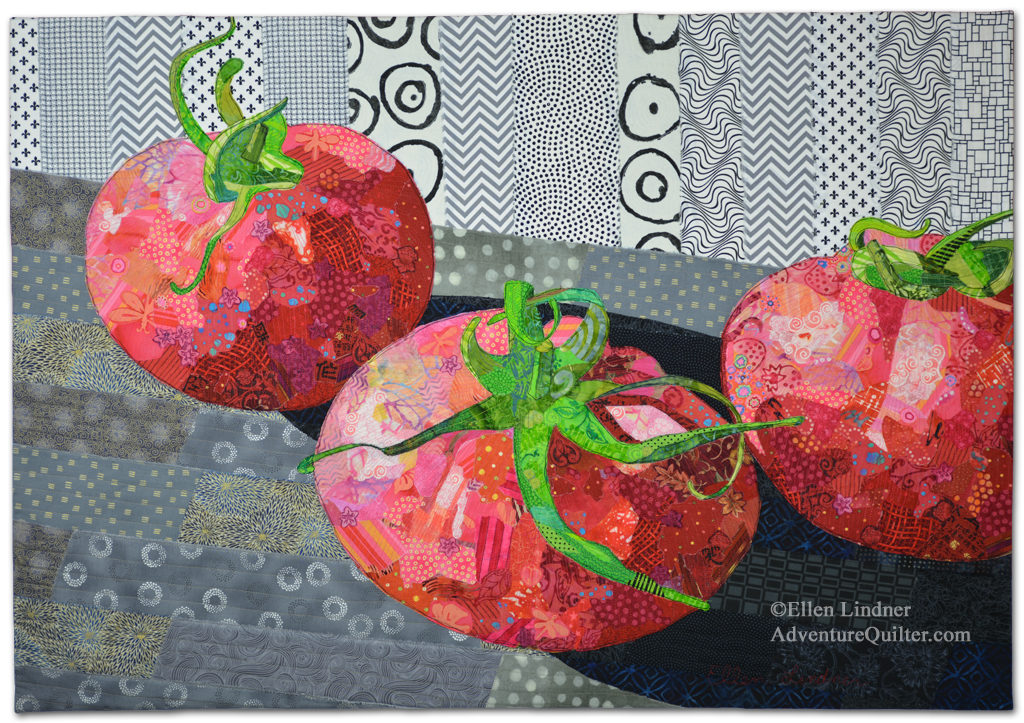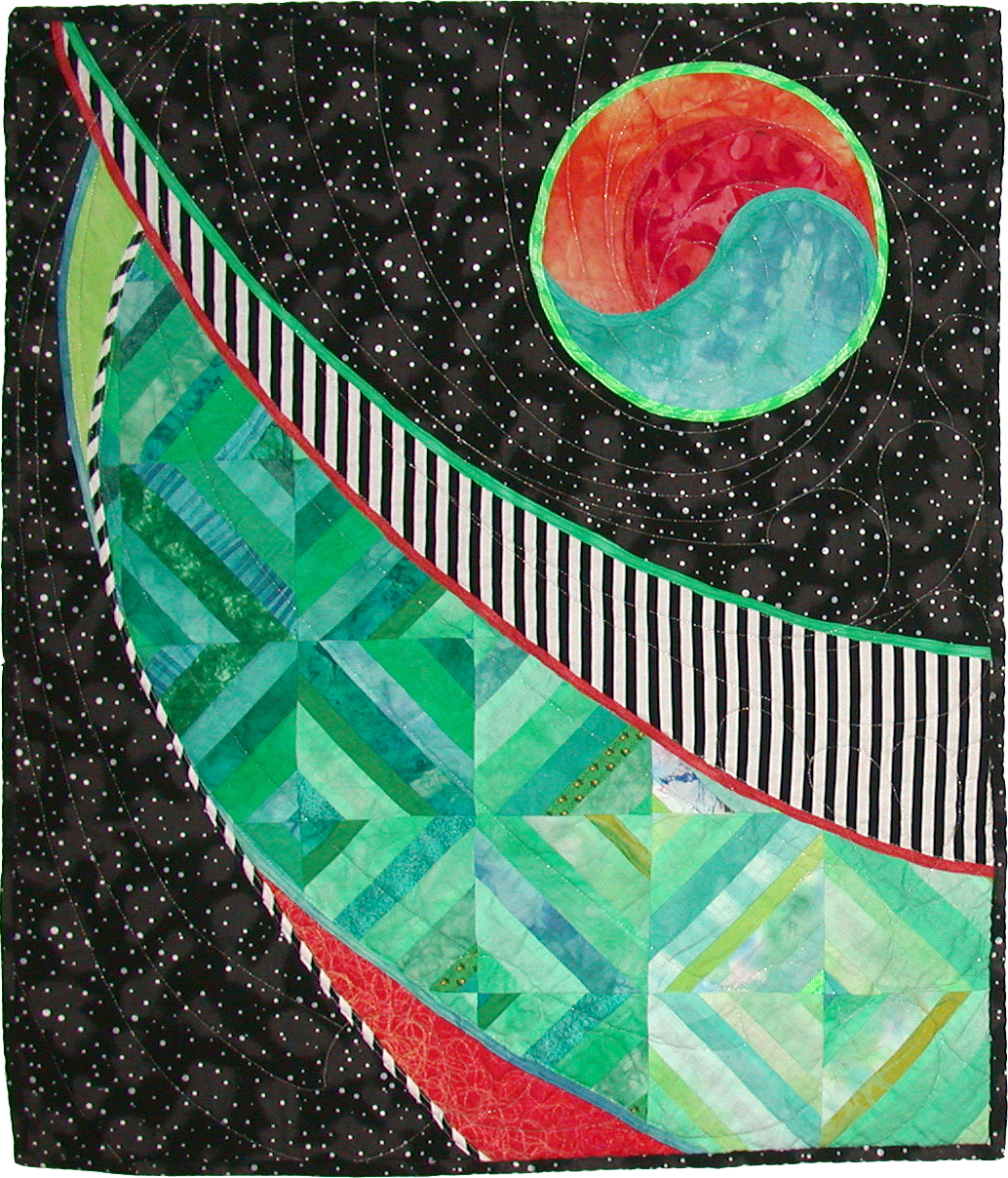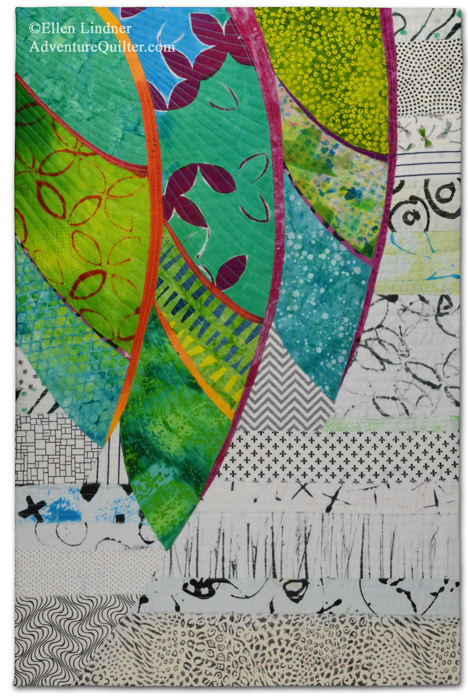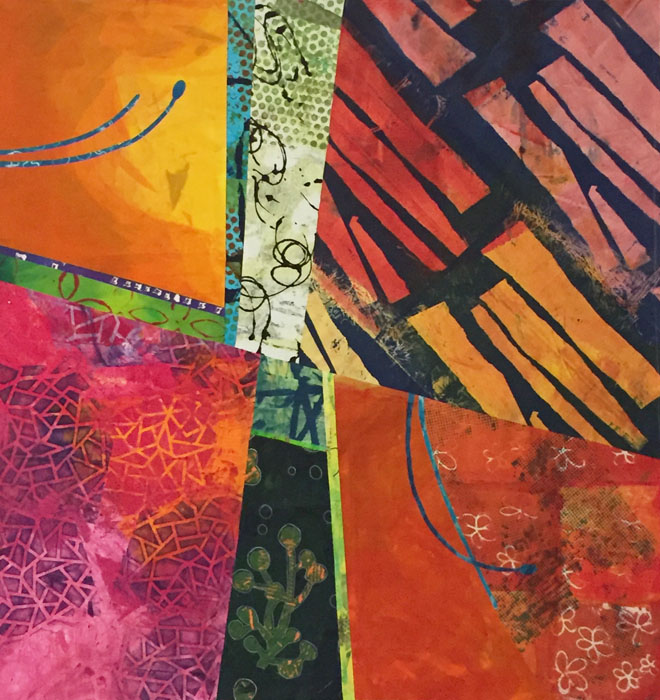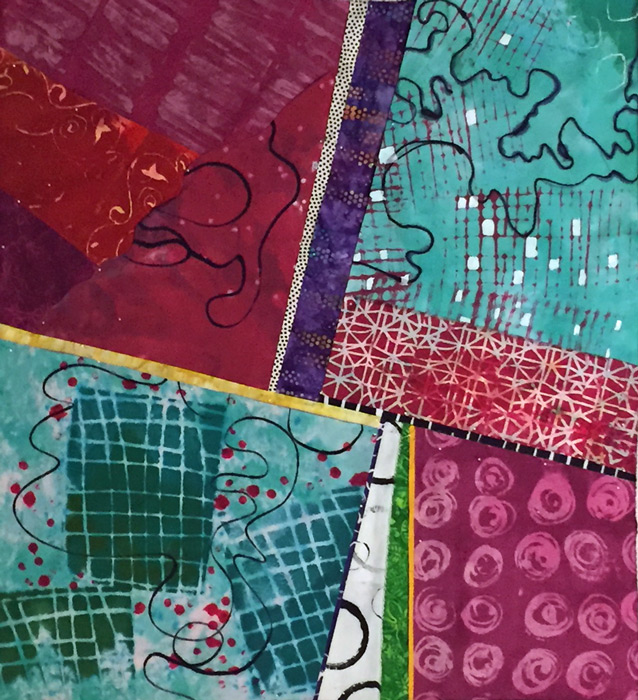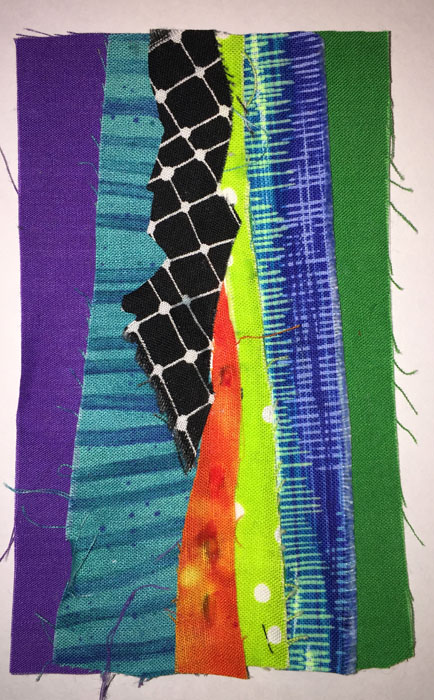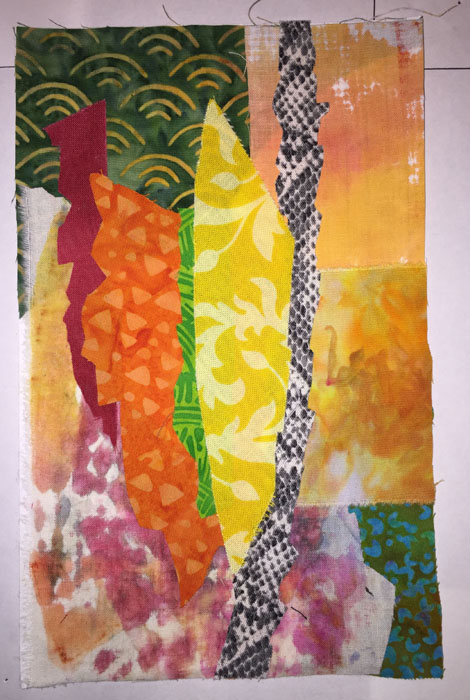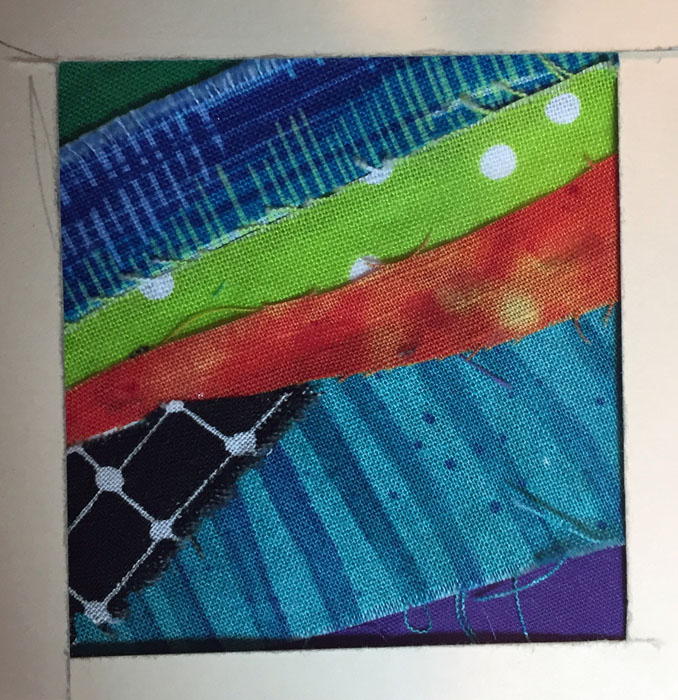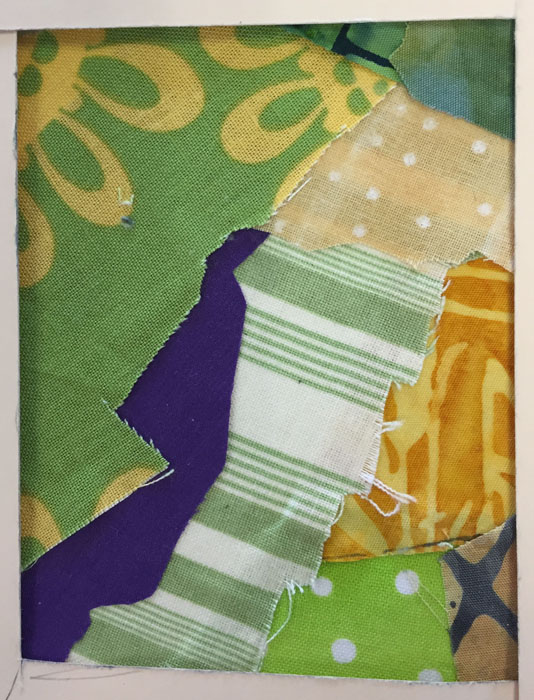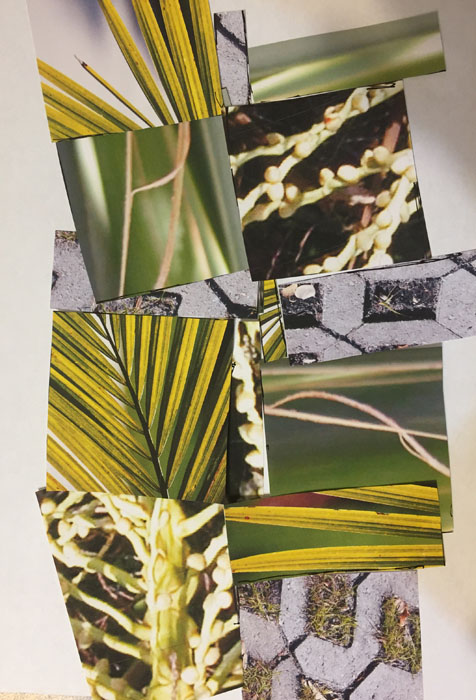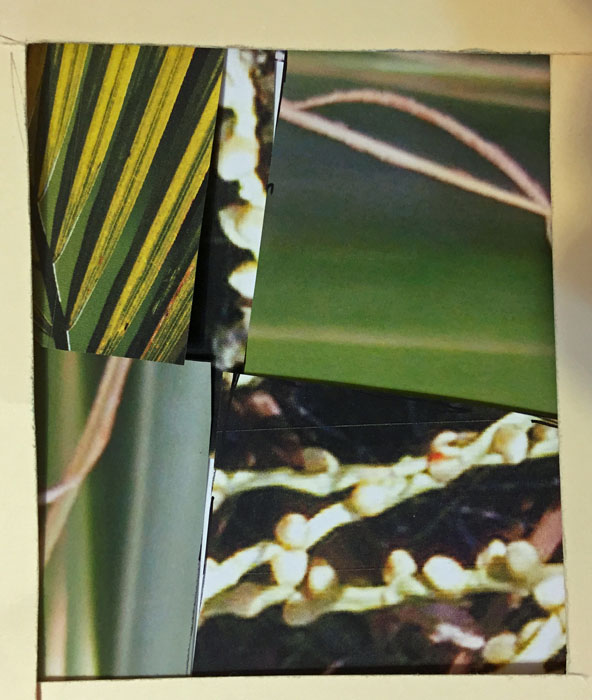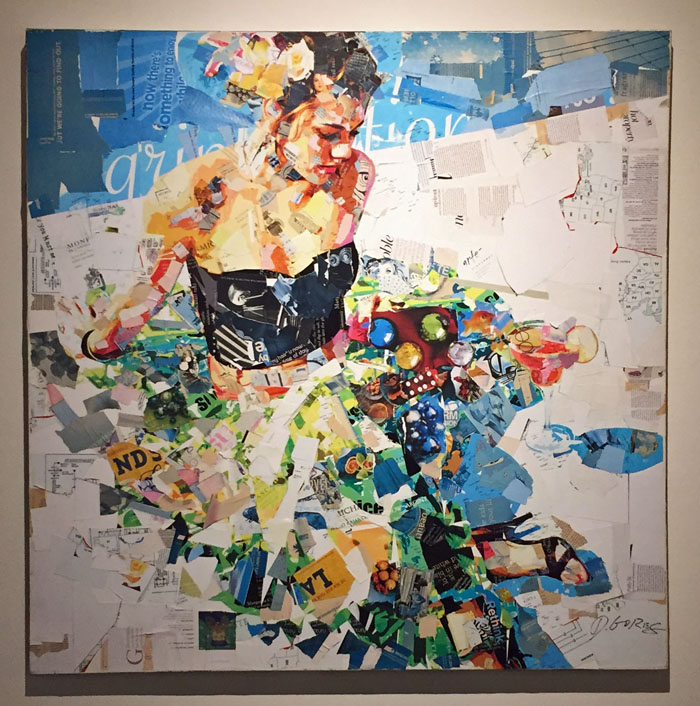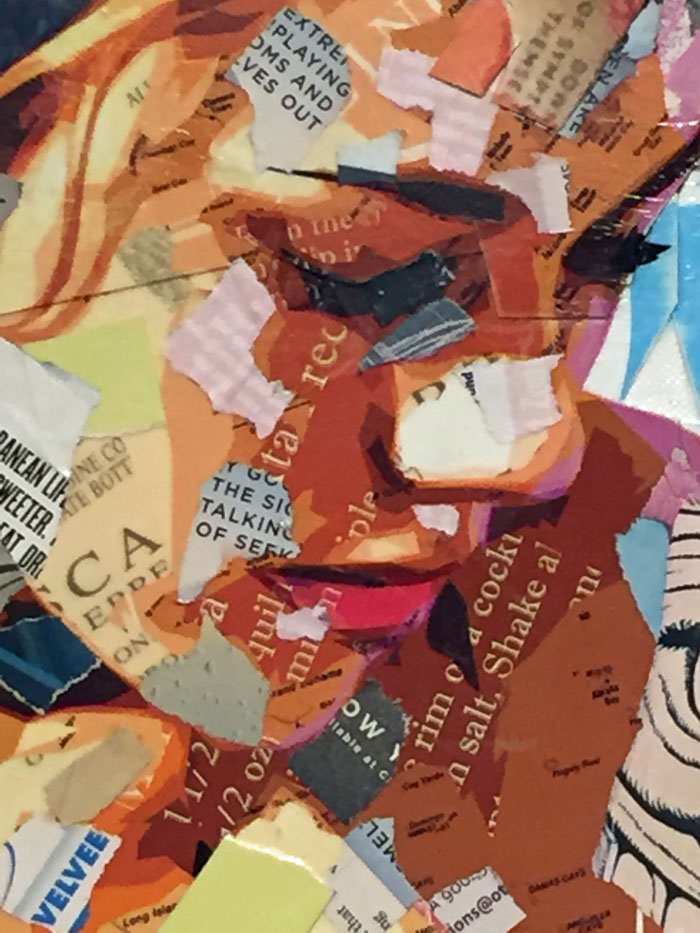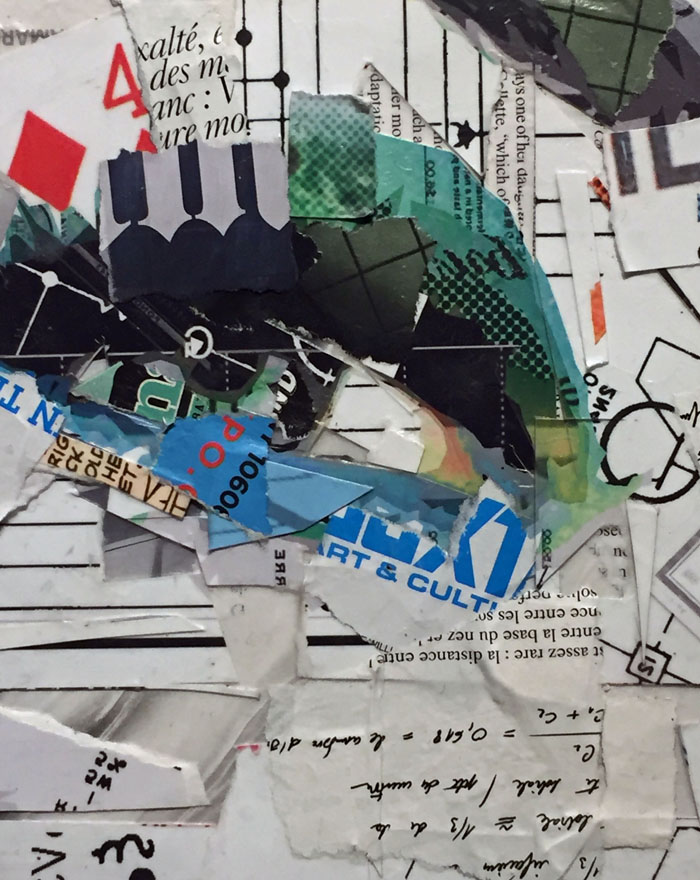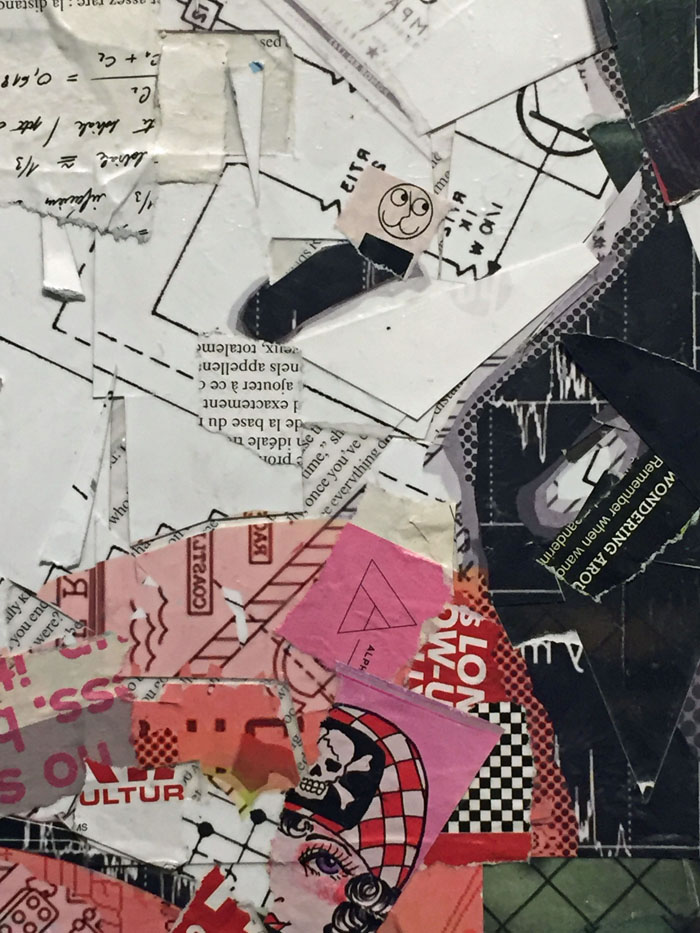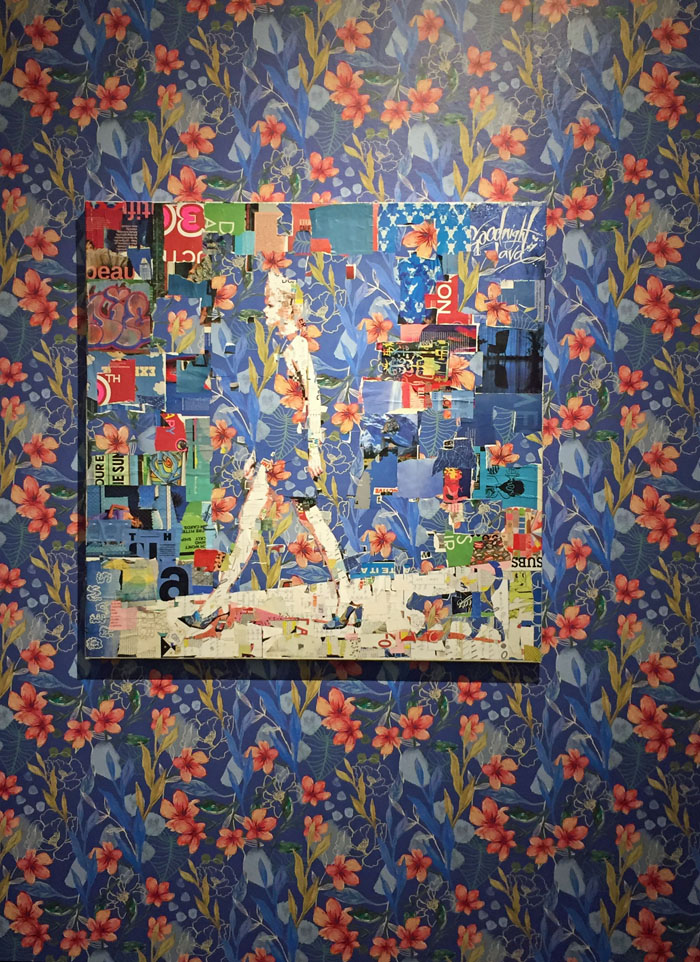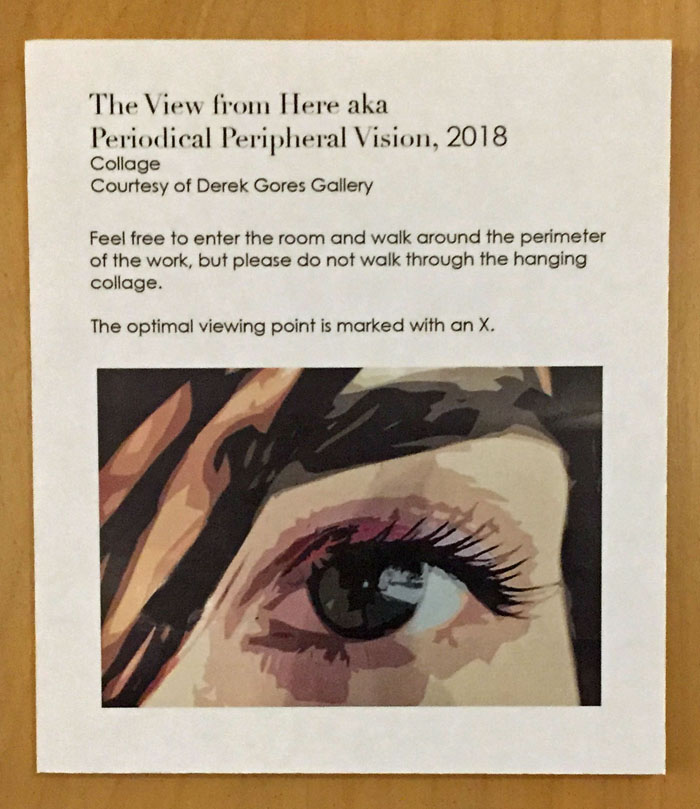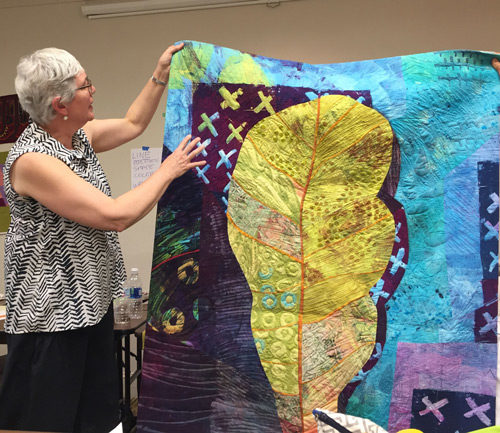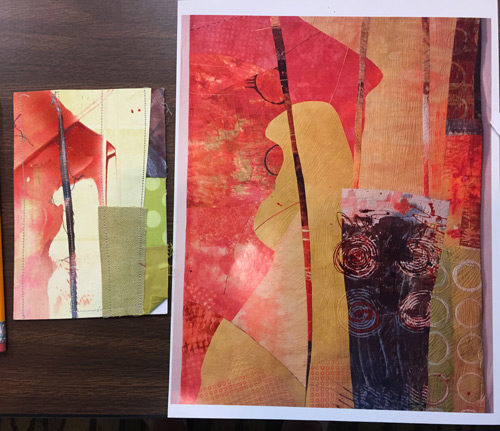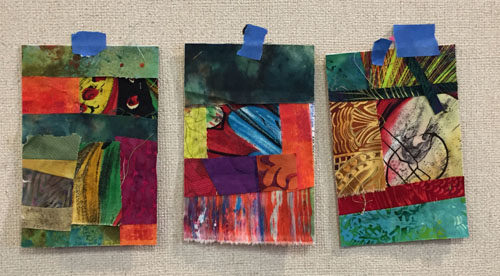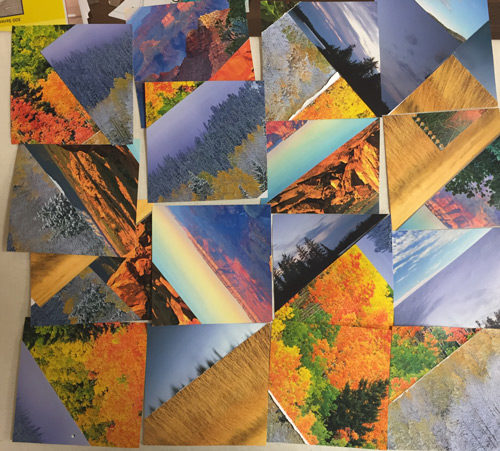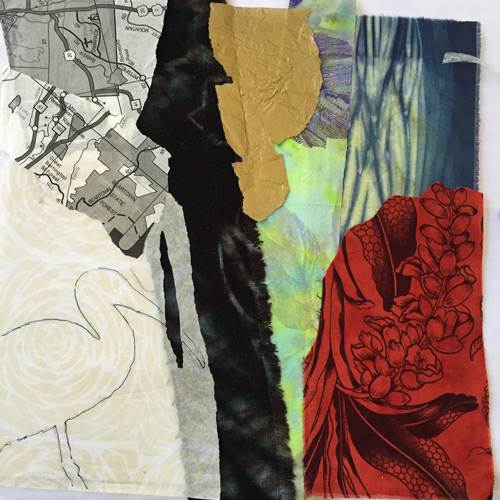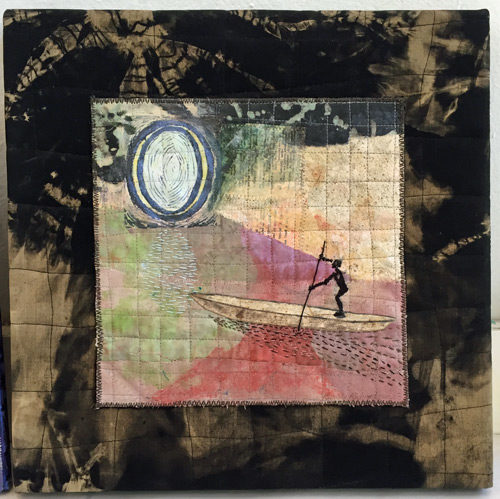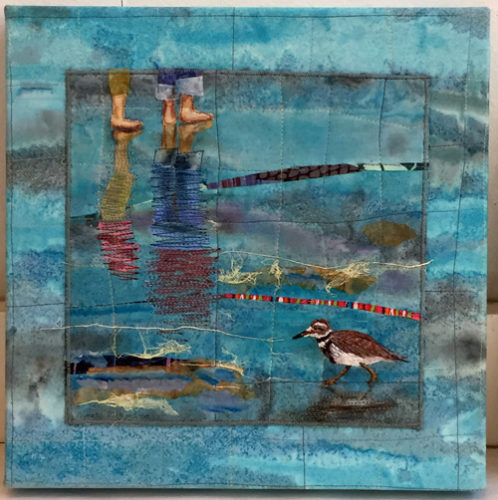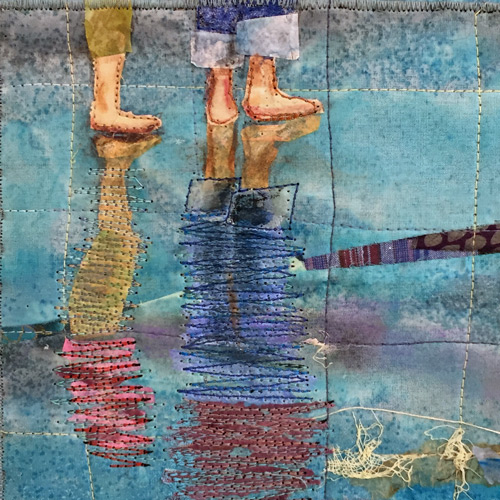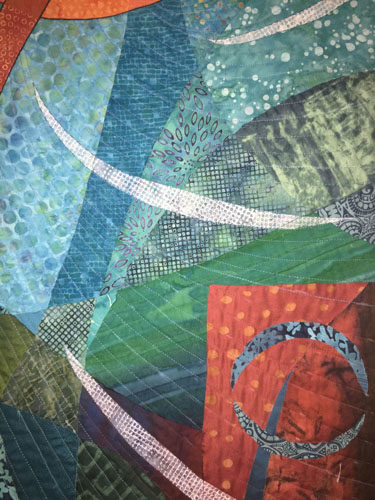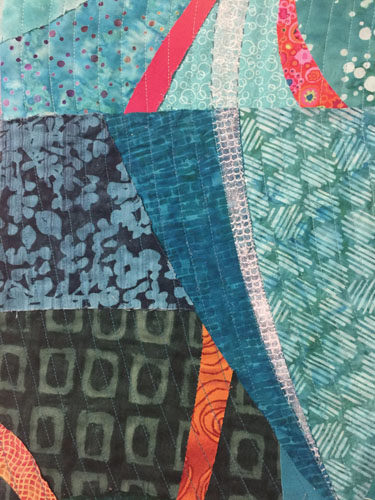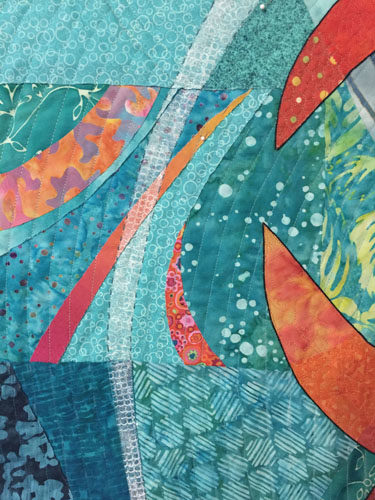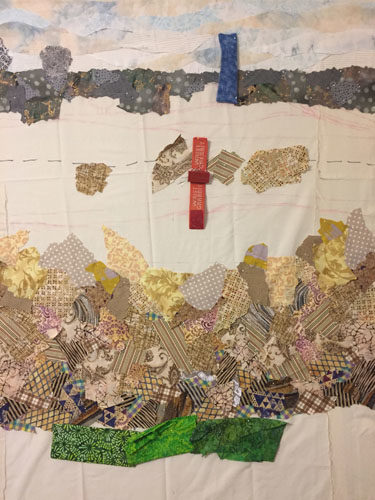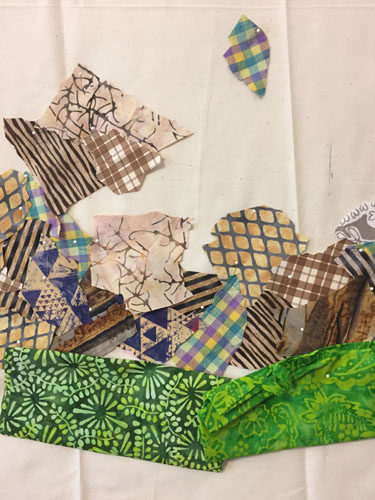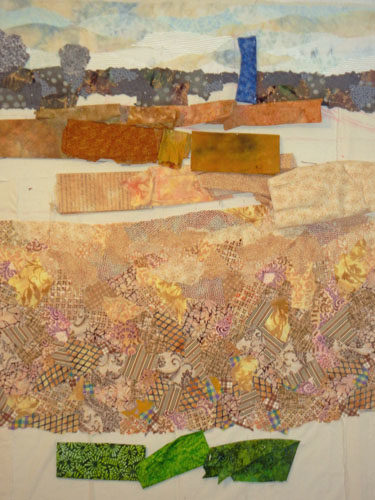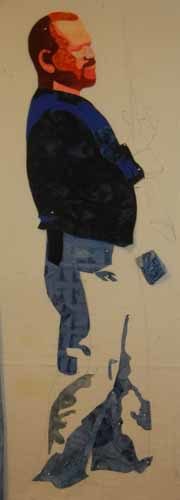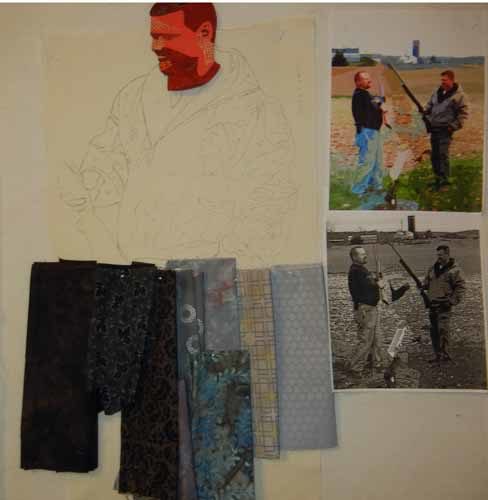In the fall of 2017, hurricane Irma set its sights on Florida. Although Floridians don’t get too excited about most hurricanes, this one was a category 5, the strongest possible. It’s path was hard to predict, so ALL of the Florida peninsula was in the strike zone. As a result, widespread evacuations were ordered and everyone took the storm very seriously. The outcome was over 6.5 million people evacuating, over one-quarter of the state’s population!
As you might imagine, this mass exodus created a new set of problems: huge traffic jams, gas shortages, and a lack of available hotel rooms. All of this factored in as I (a Floridian) designed this piece.
Ahead of the Storm
The swirl of fabric strips was a bit of play that I had done a couple of years before. It served as the perfect starting point for the composition.
I hand stitched the name of the hurricane, as well as some text about the evacuation issues.

I made this quilt for a call for art named “Forced to Flee.” However, I sold it right away, so I won’t be entering it after all.
My best patron, my mom, was the buyer. Shortly after purchasing it, she meekly asked, “How much trouble would it be to remove the word ‘Irma’?” What? That’s the main point, right? But, I got it: she had no relationship to that particular hurricane and preferred something generic. Now, I wouldn’t do this for anyone else, but for my mother, what could I say? Of course, I removed it.
Afterwards, I thought it looked a little empty in that corner, so I added “Category 5,” much smaller. I forgot to take a picture of the revised version, but this computer edited photo will give you a pretty good idea.

I have to admit I think it looks better and my mom loves it.
Have you ever altered a piece of art after finishing it? Or after SELLING it?
Ellen Lindner
P.S. We didn’t evacuate for Irma only because there’s a shelter just down the road. We knew we could get there quickly if needed. Fortunately for us, it only side swiped us as a much weaker storm. We tend to measure the strength of storms in the number of days the power was out. This one was only a few hours!

